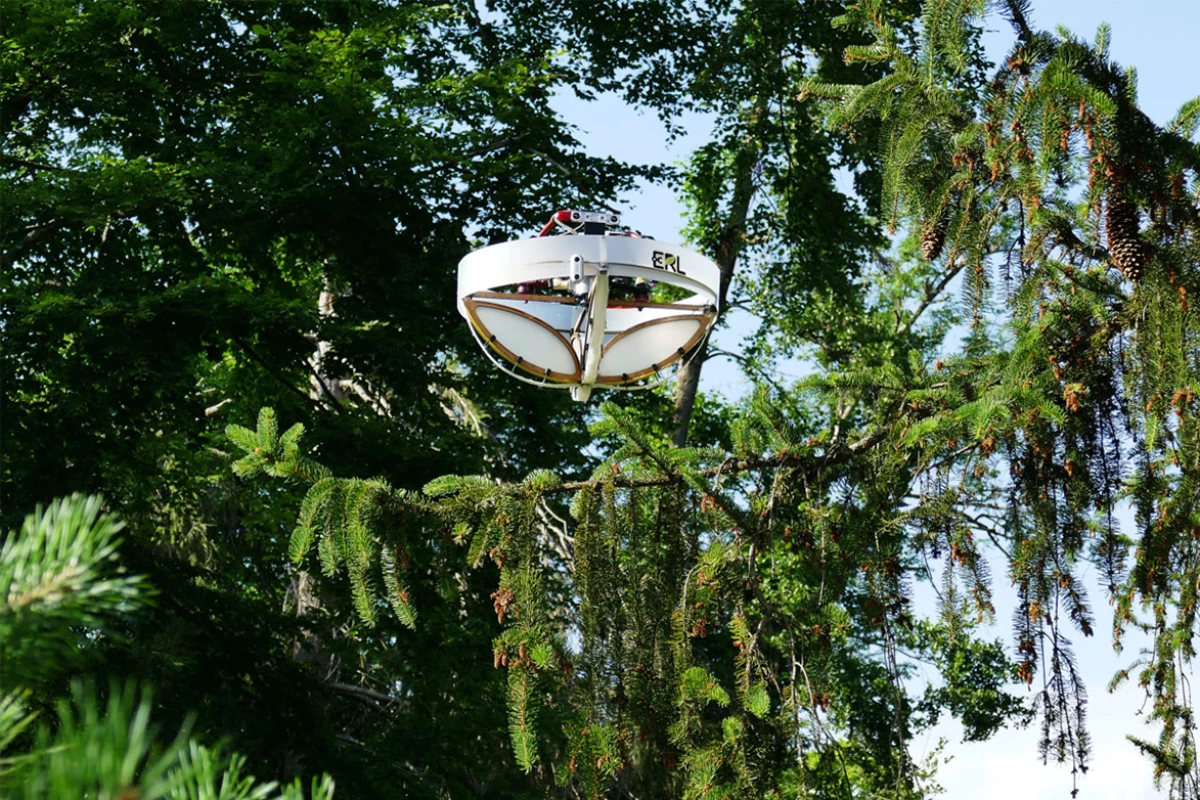If you want to know which animals are present in a given location, a good way of finding out is to look for their cast-off DNA. A new drone is designed to help scientists do so, by autonomously sticking itself to tree branches.
Throughout their lives, animals disperse DNA into the environment via their feces, sloughed skin, and other genetic material. Therefore, by seeing what types of this "environmental DNA" (eDNA) are present in water, soil or air samples, scientists can determine which species are present in the region.
Among many other applications, we've recently seen eDNA analysis used to check for great white sharks near beaches, document a frozen prehistoric ecosystem, and even search for the Loch Ness monster.
Of course, airborne genetic material doesn't stay in the air indefinitely – after a while, it settles onto surfaces such as branches. Collecting eDNA from branches that are high up in the forest canopy, however, could be quite arduous and time-consuming (not to mention dangerous) to do by hand. That's where the drone comes in.
Known as the eDrone, it's being developed by scientists from Switzerland's ETH Zurich research institute; The Swiss Federal Institute for Forest, Snow and Landscape Research WSL; and French eDNA tech company Spygen.
Utilizing a depth-sensing camera and other sensors, the quadcopter starts by autonomously making its way up to a target branch. The aircraft then lands on that branch, pressing a cage on its underside into the leaves (or needles). As it does so, any genetic material which is present on the branch sticks to strips of adhesive on the cage.
Force sensors in that cage are used to assess how much "give" each branch has, allowing the drone to make a stable landing by not applying too much or too little pressure. Once the sampling process is complete, the eDrone flies itself back to the ground, where scientists can retrieve the gathered eDNA.
In tests performed so far, the aircraft has been used on seven tree species, from which it collected the eDNA of 21 different groups of organisms. It is now being readied for use in an international competition, in which teams will have 24 hours to detect as many species as possible across 100 acres (40 hectares) of Singaporean rain forest.
You can see the eDrone in action, in the video below. A paper on the research, which is being led by ETH Zurich/WSL's Prof. Stefano Mintchev, was recently published in the journal Science Robotics.
Source: ETH Zurich




